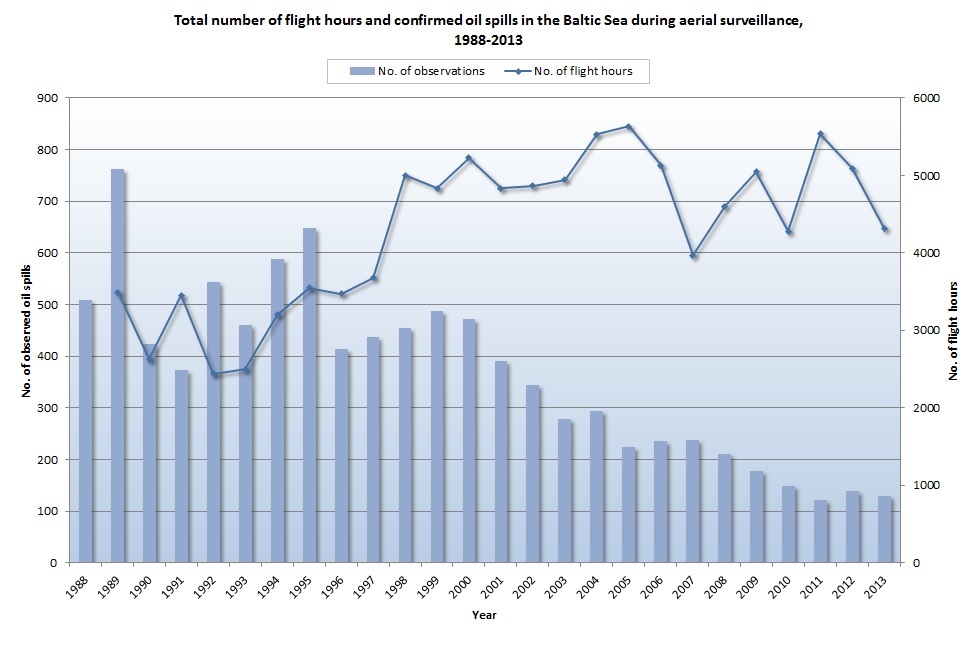HELCOM countries use satellite information to monitor oil spills in the Baltic Sea

Helsinki Commission – The Baltic Marine Environment Protection Commission (HELCOM)
The members of the Helsinki Commission are the nine Baltic Sea states (Denmark, Estonia, Finland, Germany, Latvia, Lithuania, Poland, Russia and Sweden) and the EU, which are Contracting Parties to the Helsinki Convention. The aim of the intergovernmental cooperation is to protect the Baltic Sea from all sources of pollution and to ensure safety of navigation in the region.
The challenge
Oil spills are one source of pollution, among other substances from ships and from land. Even small amounts of oil can have a negative impact on the marine environment; seabirds for instance are very sensitive to oil.
Any oil and oily mixture discharges into the Baltic Sea are prohibited according to IMO MARPOL Annex 1 special area regulations. However, HELCOM statistics, based on detections by national surveillance aircraft, show that over 100 illegal oil discharges by ships occur every year in the Baltic Sea.
The satellite solution
In order to prevent and detect any violation of existing discharge regulations, the Baltic Sea states have agreed within the HELCOM framework to regularly conduct aerial surveillance, individually and jointly.
Satellite observations support the efforts of the Baltic Sea states in their surveillance work. Satellite surveillance in the Baltic Sea has intensified since 2007 thanks to the CleanSeaNet satellite surveillance service provided by the European Maritime Safety Agency (EMSA). The satellite images are delivered to users of CleanSeaNet in near real time to provide a first indication of possible oil slicks to be checked by aircraft on spot. The HELCOM Group on Aerial Surveillance annually checks the operational satellite coverage requirements for the Baltic Sea area and sends a request to EMSA for each sub-area.
The result
Regular aerial and satellite surveillance has contributed significantly to the decrease in illegal discharges of oil in the last ten years because ships are aware that their activities are being monitored.
In 2013, a total of 565 satellite scenes were provided by EMSA to the users of CleanSeaNet in the Baltic Sea indicating 130 possible detections of which the national surveillance aircraft were able to inspect 61% within three hours of the first warning. Of these detections the aircrews were able to confirm 5% as mineral oil spills, 11% as spills of other oil types, chemical, sewage or garbage, and 8% as unknown substances. Typical false positive detections are caused by natural phenomenon like waves.

The EMSA CleanSeaNet service has proven to be a valuable asset in the Baltic Sea in deterring and monitoring illegal oil spills as it provides near real time information on potential spills when the opportunity to detect spill and to catch potential polluters is time-limited. Laura Meski, Baltic Marine Environment Protection Commission

